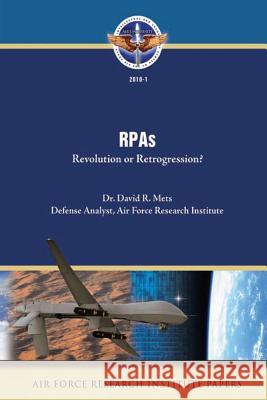RPAs: Revolution or Retrogression? » książka
RPAs: Revolution or Retrogression?
ISBN-13: 9781479139149 / Angielski / Miękka / 2012 / 38 str.
A historian's occupational disease is to find old precedents for practically everything new that comes along. And that is true for remotely piloted aircraft (RPA) as well. In one way they are merely the continuation of the millennia-old human longing for methods of striking or observing one's enemies while remaining safe. The purpose of this essay is to briefly explore that which is old, to dwell for a time on what seems to be new, and to conclude with some speculations about the future of unmanned systems. George Patton once remarked that the object is not to die for one's country, but rather to make the other guy die for his. Thus, one way of looking at the history of military development is seeing it as an eternal search for standoff and precision to discover what one's enemy might be doing, or to strike him blows with minimum risk to one's health. That is often achieved through skill with minimal force rather than brute strength as with David and Goliath. So, too, it is with Predator operators at Creech AFB, Nevada, reaching across the world to see and then strike with small Hellfire missiles launched from Predator or Reaper RPAs. Precision-guided munitions (PGM), cruise missiles, and intercontinental ballistic missiles (ICBM) have long shared these characteristics, but none of these can be reused-guidance and propulsion systems are consumed with each round. RPAs have had much in common in the development of the technology with those, but are intended for reuse of the power and guidance apparatus.
Zawartość książki może nie spełniać oczekiwań – reklamacje nie obejmują treści, która mogła nie być redakcyjnie ani merytorycznie opracowana.











